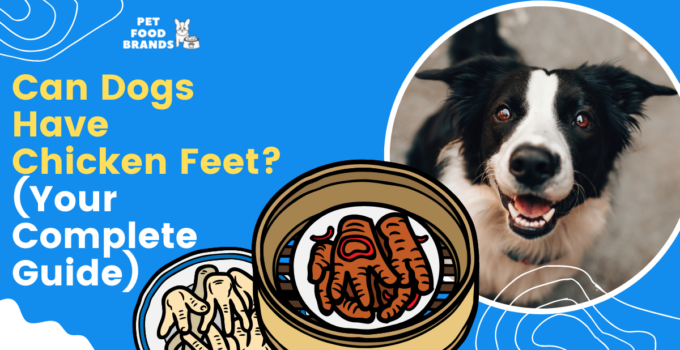From pet stores stocked up with chicken feet to fellow pet parents discussing giving chicken feet as treats to their pups, this unconventional food has become a rage. Chicken feet are becoming a popular choice among pet owners who are seeking natural treats.
But are chicken feet safe for dogs? Is it okay if your furry companion consumes chicken feet? While chicken feet are fully digestible and safe for dogs, you cannot give all types of chicken feet to them.
If you are still wondering why and how you should give chicken feet to your dogs, you are in the right place. I have elaborated on the safety, benefits, and risks of dogs eating chicken feet. Dive right in to learn all about it!
Are Chicken Feet Safe for Canines?

Yes, it is safe for dogs to consume chicken feet, but you must have heard people advise not to give your dog chicken bones, which is partially true.
It is not safe to give cooked, fried, or even boiled bones to canines. Cooking the bones at higher temperatures can turn them into hard, glass-like structures, which can break into pointy splinters when dogs chew them, and the splinters could lead to serious injuries.
On the contrary, dehydrated (dried) or raw chicken bones are safe. Raw chicken feet may have a rather soft or brittle texture, which will crush but not break in pointy objects, and your dog can easily digest them.
Besides bones, chicken feet consist of skin, cartilage, and connective tissue, making them easy to digest. You can feed chicken feet to your canines in the following forms:
1. Raw Chicken Feet
Raw chicken feet come straight from a butcher or farmer’s market as off-cuts. They could be either fresh or frozen but have not gone through any processing at all, implying they will require thorough cleaning before being fed to dogs.
While you could just directly give your dog fresh as well as frozen raw chicken wings, you can also dehydrate them at home.
2. Dehydrated Chicken Feet
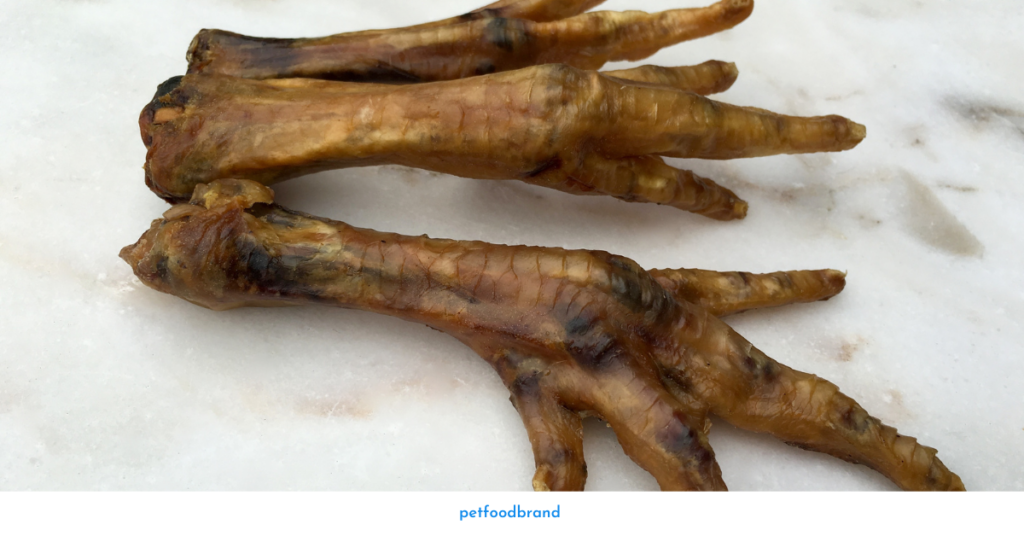
You can also find chicken feet cleaned, dehydrated, and properly packaged in the market. They tend to have a longer shelf-life of up to 6 months, even though your dog will go through the pack in no time.
Dehydrated feet tend to be yellow in color and look shriveled when compared to raw chicken feet.
3. Puffed Chicken Feet
Although they are quite similar to dehydrated feet, puffed chicken feet are air-dried, which helps retain vitamins and nutrients during the drying process. These treats can be whiter in color and either retain the feet shape or might look puffed up.
Benefits of Giving Chicken Feet to Dogs
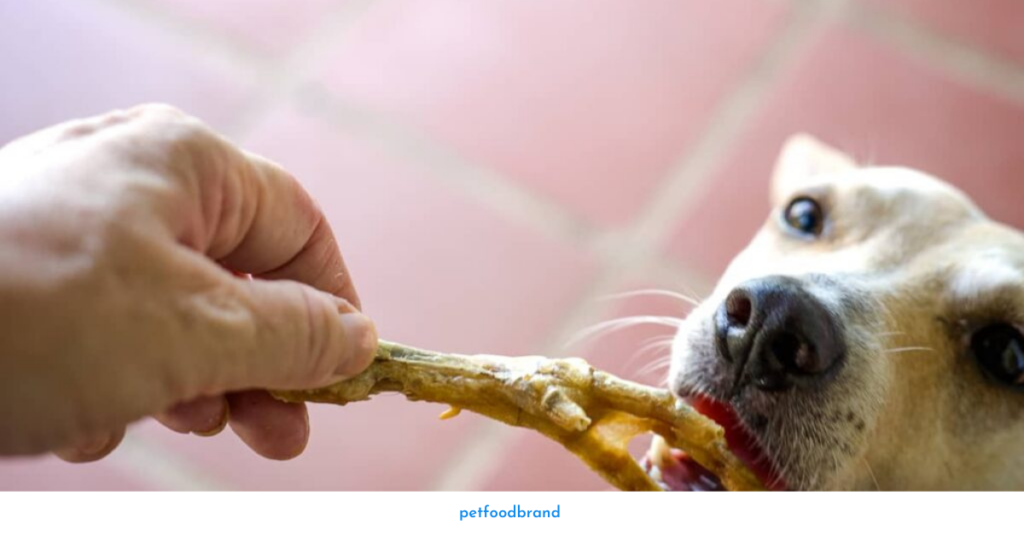
Chicken feet are becoming a great natural alternative treat among pet owners because of the health benefits they can offer to canines. Some of them are:
1. Promotes Dental Health
Dental diseases have become common, affecting around 76% of the canines present in the United States. This makes dental care even more important for dogs, as the lack of it can lead to bad breath, and if you leave it untreated, it can even cause infection or illnesses affecting their liver, heart, and kidney.
Brushing is a great way to ensure your dog’s dental health, and you should ideally do it daily using special dog toothpaste.
In case your furry friend doesn’t like getting their teeth brushed or won’t tolerate it, you can instead try chicken feet. When a dog chews on the bones of chicken feet, it can naturally remove the build-up of plaque and tartar on its teeth.
Raw chicken feet can help maintain your dog’s dental health by keeping its teeth and gums clean.
2. Improves Bones and Joints
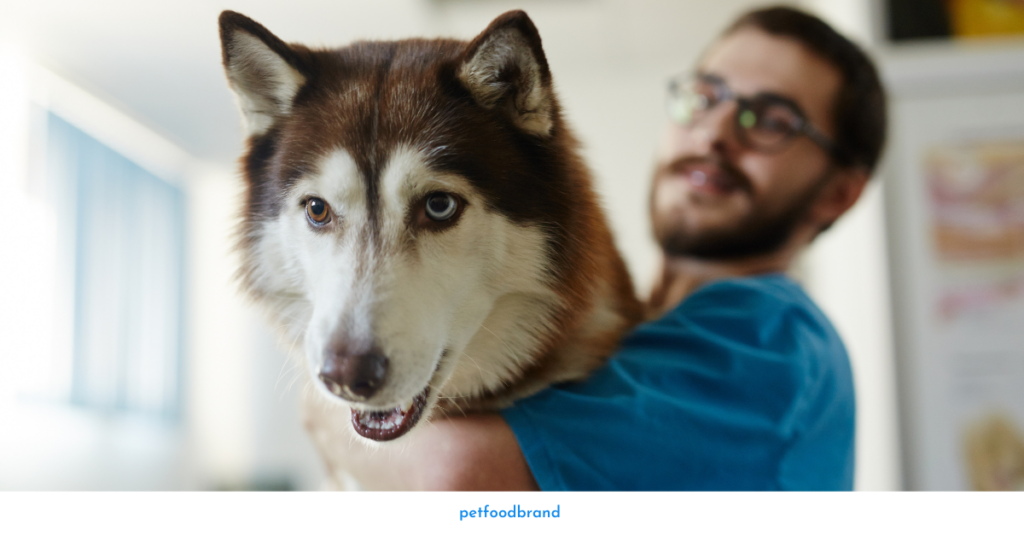
Dogs also suffer from joint pains and even arthritis, and they need supplements to ensure it doesn’t affect their mobility. Veterinarians often recommend glucosamine and chondroitin to dogs suffering from arthritis to help alleviate the condition.
Each chicken foot can contain a good amount of glucosamine. It is a great way to naturally give glucosamine and chondroitin to dogs rather than as pills. Chicken feet are not only the cheapest but also an effective arthritis treatment for canines.
Risks Associated With Feeding Chicken Feet to Dogs
Pet owners often believe that there can be risks of infection associated with giving raw chicken feet to dogs, and cooking might make them safer. However, that’s not true since cooking a chicken’s feet could make them even more dangerous for dogs.
The bones present within the feet offer joint as well as teeth benefits. When you cook chicken feet, the bones become brittle and can splinter easily.
The splintered bits of feet bones are sharp like a scalpel blade and could even pierce a canine’s gastrointestinal tract, which could lead to peritonitis and sepsis.
When you dehydrate or cook chicken feet to make jerky-type treats, it involves heating the meat between 130 to 140 degrees Fahrenheit throughout to prevent contamination. But such temperatures for a long time can dehydrate them enough to make the bones brittle and increase the risk of choking or puncturing their gastrointestinal tract.
How much Chicken Feet can you Serve to Canines?

If you are giving chicken feet to your dog for the first time, you must start gradually. While you can give one chicken foot to a small dog in a day, you can give two to larger dogs.
But don’t expect your dog to take too much time to eat a chicken foot, as a smaller dog will consume it within 15 minutes, and a larger dog will finish them rather quickly. Remember that even if chicken feet are healthy treats, they count as food, so you must reduce your dog’s diet a little to account for these treats.
Things to Keep in Mind when Feeding Chicken Bones to Dogs
Here are a few key things you must not forget when giving chicken bones to your dog:
1. Avoid Nails
The one part of chicken feet that could create problems for your dog is the nails. They are sharp and also harder to digest than any other part of a chicken foot.
While dog food manufacturers often trim off the nails during the preparation process, if not, you should do that yourself with a quick snip with kitchen scissors.
2. Be Cautious When Feeding it to Puppies
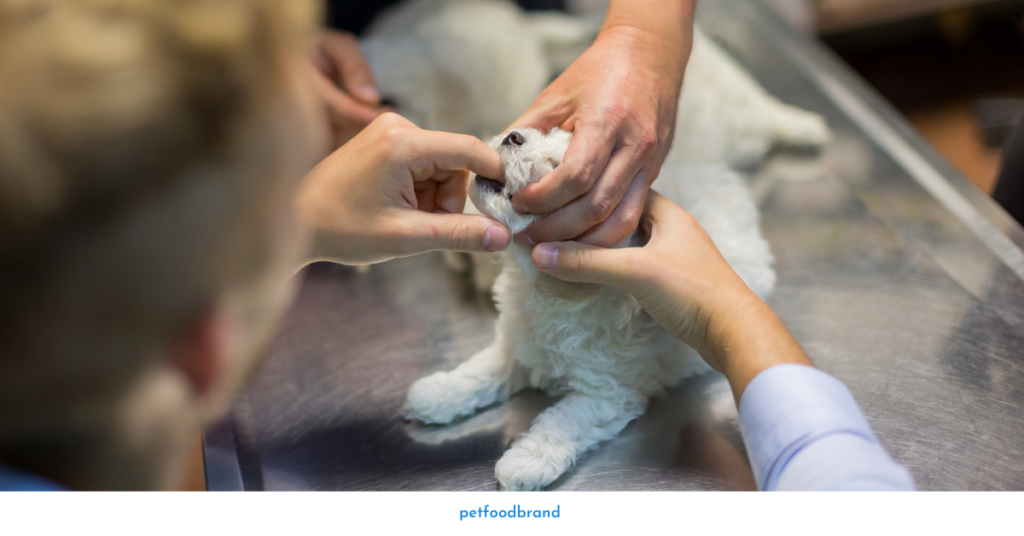
Chicken feet can require some effort to crunch them, so it is best to avoid giving them to young puppies. It will prevent damage to their developing teeth and reduce the risks of them swallowing unchewed food.
Some pet parents suggest that you can give chicken feet to small puppies who are four months old or when they start losing their baby teeth and get adult teeth.
3. Not Suitable For All Dogs
In the case of obese dogs that are on a diet, you must avoid giving them any treats. Even though chicken feet are a healthier option, a dog who is on a must stick to kibble alone.
Besides that, canines prone to pancreatitis should not consume chicken feet since the fat content may cause a flare-up. Lastly, if your dog is allergic to chicken, chicken feet will not suit them, so it’s best to avoid offering them to your furry friend.
Frequently Asked Questions
Can Chicken Feet Cause Diarrhea?
No, since chicken feet are not meaty, they might not cause diarrhea in dogs with healthy guts.
How Do I Store Chicken Feet at Home?
Once you open them, you can store dehydrated and puffed chicken feet inside an air-tight container in a cool place for 6 months. You must keep fresh chicken feet in the fridge and use them within the same time duration as you would consume fresh chicken.
Can Chicken Feet Lead to Blockage?
No, chicken feet break and crumble when your dog chews on them, so they are not likely to cause blockage.
Final Thoughts
Your primary concern as a pet parent will always be to feed your dog the right food. It becomes even more concerning if your furry friend has a sensitive gut or some other underlying health issues.
However, chicken feet are safe for your dog if given as treats along with their regular diet. You must ensure they are fresh and not cooked or dehydrated to prevent the chances of choking or blockage.

Ankita is a passionate pet lover and head of content at Pet Food Brands. With her extensive knowledge and research, she provides pet owners with top-quality information on dog food and nutrition. Her dedication to improving the lives of dogs makes her a leading voice in the industry.

